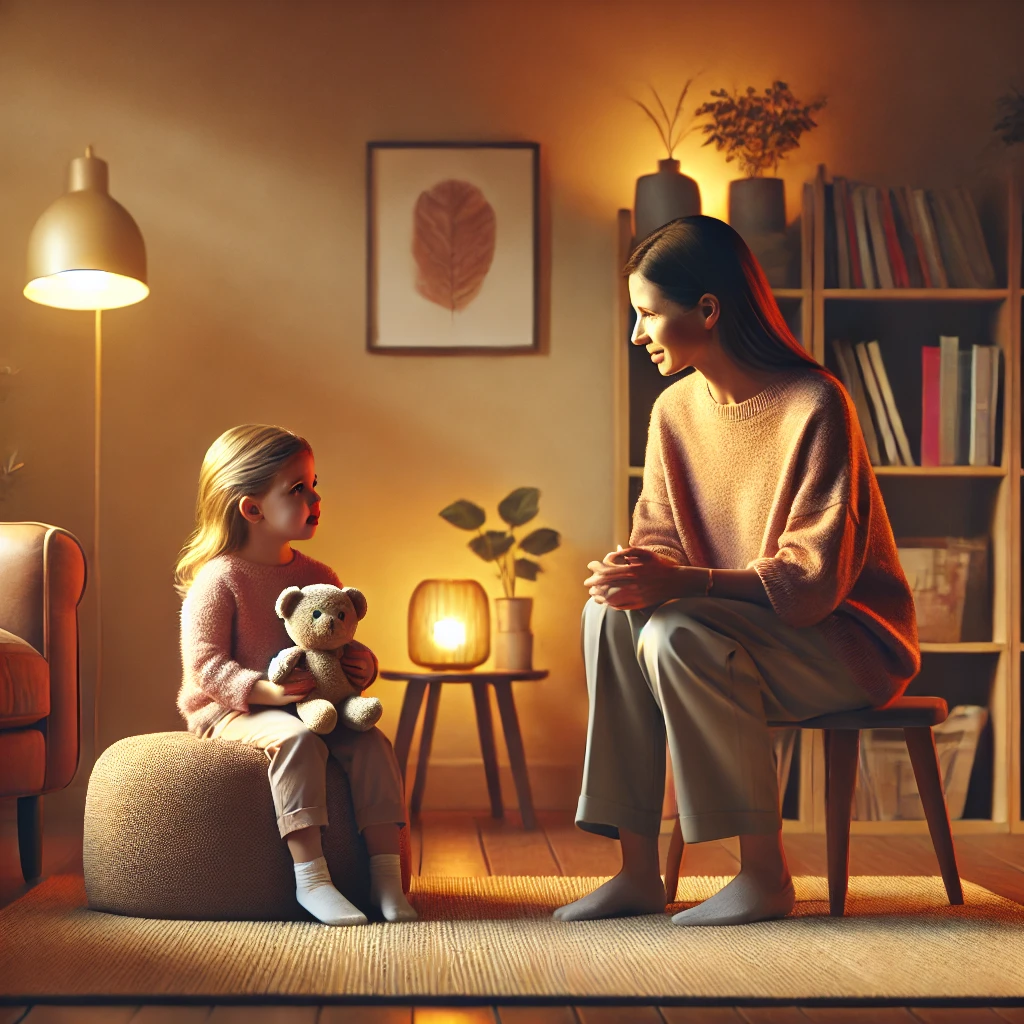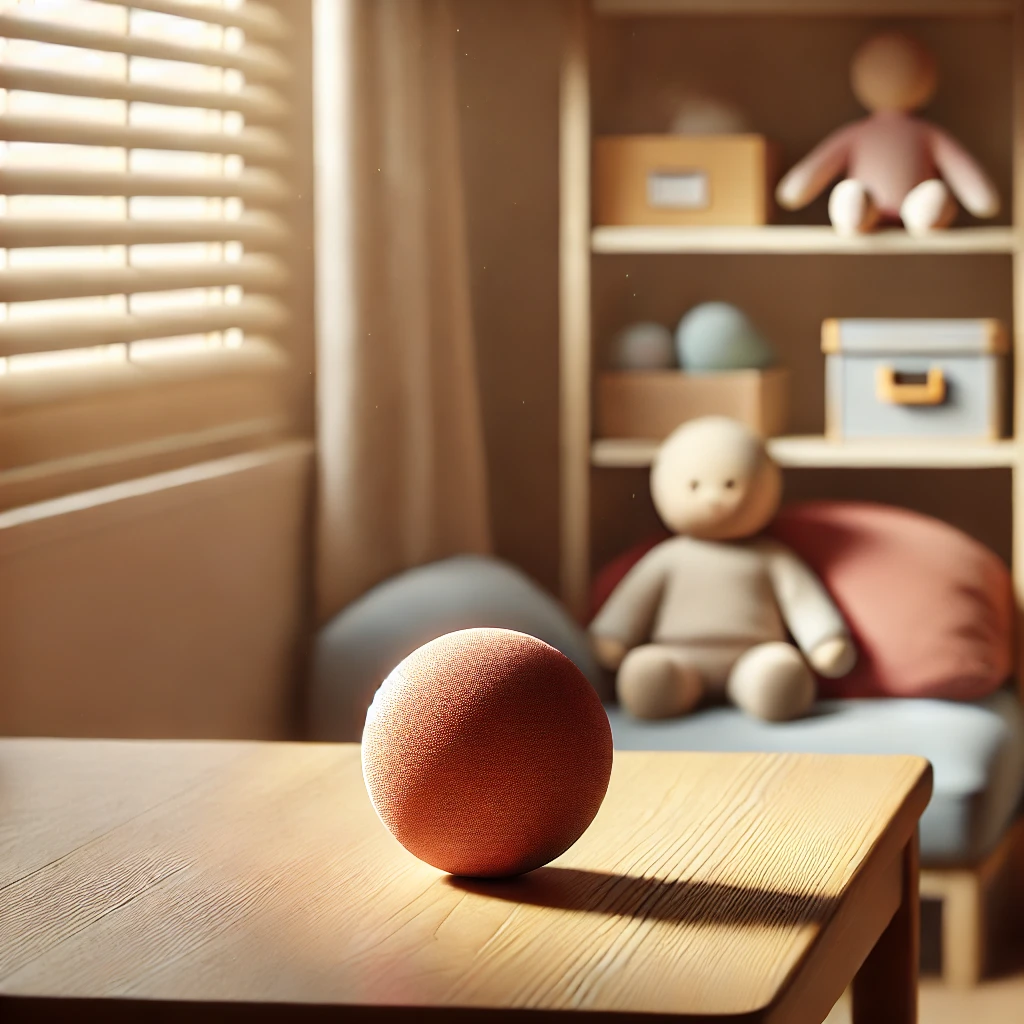Understanding the Emotional Needs of Children
Every child embarks on a unique emotional journey, shaped by their temperament, environment, and relationships. During childhood, emotions are experienced deeply but not always understood or expressed in socially appropriate ways. Emotional growth in children is not merely about managing tantrums or mood swings; it’s about learning how to recognize, understand, and respond to feelings in themselves and others. Unfortunately, many children struggle with behavioral and emotional regulation, leading to stress at home, in school, and in peer relationships. Behavioral therapy for kids provides a structured, evidence-based approach to help children develop the emotional tools they need to thrive.
You may also like: How Does CBT Work to Improve Relationships and Communication? Science-Backed Techniques for Getting Along with Others
A child behavioral therapist brings a specialized understanding of child development, psychology, and behavior modification techniques. These professionals work closely with both children and their families to foster healthy emotional development. They are trained to identify maladaptive behaviors, uncover their root causes, and implement interventions that teach healthier responses. Parents, often overwhelmed by the emotional outbursts or persistent defiance of their children, may feel lost without a clear strategy. A child behavioral therapist provides not only expertise but also reassurance and guidance, empowering parents to better support their child’s emotional journey.
What Is Behavioral Therapy for Kids?
Behavioral therapy for kids is a structured form of psychotherapy that focuses on helping children replace negative or harmful behaviors with positive, constructive ones. Rooted in the principles of behaviorism, it operates on the idea that behaviors are learned and can be unlearned or modified through consistent reinforcement and support. The process often involves identifying triggers for problematic behaviors, establishing clear expectations, and using a reward-based system to encourage desired behaviors. Common methods include Applied Behavior Analysis (ABA), Cognitive Behavioral Therapy (CBT), and Parent-Child Interaction Therapy (PCIT).
Each of these approaches offers different techniques tailored to specific challenges. ABA, for instance, is widely used for children on the autism spectrum and emphasizes breaking down tasks into small, manageable components. CBT, on the other hand, helps children identify negative thought patterns and develop healthier ways of thinking and behaving. PCIT focuses on improving the quality of the parent-child relationship, using real-time coaching to guide parents in managing behavior more effectively. Across all these methods, the common thread is the belief that emotional growth and behavioral regulation can be taught and reinforced in a positive, nurturing environment.
The Role of the Child Behavioral Therapist
A child behavioral therapist is more than just a counselor; they are an advocate for a child’s emotional well-being. Their work often begins with an in-depth assessment to understand the child’s emotional and behavioral challenges within the context of their home, school, and social environment. This assessment might include structured interviews, questionnaires, and direct observation. By gathering insights from parents, teachers, and the child themselves, the therapist can formulate a treatment plan tailored to the child’s specific needs.
Therapists use a collaborative approach that involves not only the child but also their caregivers. This ensures that strategies used in therapy are reinforced consistently in everyday life. A skilled child behavioral therapist knows how to build rapport with children, gaining their trust and helping them feel safe enough to explore difficult emotions. They use play, storytelling, and age-appropriate communication to engage the child in a therapeutic process that feels both supportive and empowering. As therapy progresses, the therapist monitors outcomes, adjusts strategies, and provides ongoing feedback to the family.
Why Emotional Growth Matters in Childhood
Emotional growth in childhood is foundational to lifelong mental health and social success. It influences a child’s ability to form relationships, handle frustration, cope with disappointment, and adapt to new experiences. When children lack emotional regulation skills, they may act out in disruptive ways or withdraw from social situations. This can result in academic difficulties, peer rejection, and strained family dynamics. Over time, unresolved emotional struggles can evolve into anxiety, depression, or behavioral disorders.
Behavioral therapy for kids helps prevent these long-term challenges by equipping children with the skills to understand and manage their emotions. Children learn to identify their emotional states, recognize the physical cues associated with strong feelings, and practice techniques for self-soothing and problem-solving. These skills are critical not only for personal well-being but also for academic and social success. Emotional growth, nurtured early, lays the groundwork for resilience, empathy, and a strong sense of self.
Common Challenges Addressed in Behavioral Therapy
Children come to therapy with a wide range of behavioral and emotional challenges. Some may struggle with externalizing behaviors such as aggression, defiance, or hyperactivity, while others may exhibit internalizing symptoms like anxiety, withdrawal, or excessive fearfulness. Behavioral therapy for kids can effectively address conditions such as Attention-Deficit/Hyperactivity Disorder (ADHD), Oppositional Defiant Disorder (ODD), anxiety disorders, depression, and adjustment disorders. It is also commonly used to help children navigate life transitions such as parental divorce, the birth of a sibling, or moving to a new school.
Therapists tailor their interventions to each child’s developmental level and emotional needs. For example, a child with ADHD may benefit from strategies that build executive functioning skills, such as organization, time management, and impulse control. A child dealing with anxiety might learn relaxation techniques, cognitive reframing, and gradual exposure to feared situations. In all cases, the goal is to help children develop healthier coping mechanisms and more adaptive responses to life’s stressors. A child behavioral therapist plays a crucial role in translating abstract therapeutic goals into practical, age-appropriate strategies that work in real-life settings.
How Therapy Strengthens Parent-Child Relationships
One of the most powerful outcomes of behavioral therapy is the strengthening of the parent-child bond. Many behavioral challenges stem from misunderstandings, miscommunications, or unmet emotional needs. Through therapy, parents learn to interpret their child’s behavior as a form of communication rather than simply disobedience or defiance. This shift in perspective fosters empathy, patience, and more effective responses to challenging behaviors.
Therapists often coach parents on how to set consistent boundaries, provide appropriate consequences, and reinforce positive behavior in ways that feel supportive rather than punitive. By participating actively in the therapeutic process, parents become more attuned to their child’s emotional landscape. This attunement builds trust and opens up channels of communication that may have previously been closed. As the parent-child relationship improves, children often feel more secure, leading to greater emotional regulation and fewer behavioral outbursts.

Evidence-Based Techniques Used in Therapy
Behavioral therapy for kids is grounded in evidence-based practices that have been extensively researched and shown to be effective. One commonly used technique is positive reinforcement, which involves rewarding desired behaviors to encourage their recurrence. This might take the form of praise, privileges, or tangible rewards, depending on the child’s age and preferences. Another widely used technique is modeling, where the therapist or parent demonstrates appropriate behavior for the child to imitate.
Role-playing is also a valuable tool, especially for helping children navigate social situations and practice new skills in a safe, controlled environment. Cognitive restructuring, a core component of CBT, teaches children to identify and challenge negative thoughts that contribute to emotional distress. Additionally, relaxation training and mindfulness exercises help children learn how to calm their bodies and minds during times of stress. These techniques are often integrated into a comprehensive treatment plan that is continually adjusted based on the child’s progress and evolving needs. A child behavioral therapist ensures that each intervention is both developmentally appropriate and tailored to the child’s unique personality and life context.
When to Seek Help from a Child Behavioral Therapist
Recognizing when to seek professional help can be difficult for parents, especially when behavioral issues are dismissed as “just a phase.” However, persistent challenges that interfere with a child’s daily functioning warrant further evaluation. These may include frequent emotional outbursts, extreme anxiety, difficulty forming relationships, problems in school, or behaviors that are aggressive, self-injurious, or defiant beyond age-appropriate norms. If a child’s behavior is causing significant distress for them or their family, or if previous attempts at intervention have failed, it may be time to consult a child behavioral therapist.
Parents should also consider the frequency, duration, and intensity of problematic behaviors. Occasional meltdowns are typical, but daily or prolonged episodes suggest deeper issues. Consulting with a professional does not mean labeling a child or assuming the worst. Instead, it offers an opportunity to better understand what the child is experiencing and how best to support them. Early intervention is key, as emotional and behavioral issues are generally more responsive to treatment when addressed promptly.
Supporting Emotional Growth at Home
While therapy plays a crucial role, emotional growth is most effectively supported through consistent reinforcement in daily life. Parents are the primary models for emotional regulation and communication, and their behavior profoundly influences how children learn to manage their feelings. Creating a home environment that values emotional expression, encourages open dialogue, and models healthy coping strategies can significantly reinforce the lessons learned in therapy.
Simple practices such as naming emotions, validating feelings, and problem-solving together can have a lasting impact. For instance, when a child is frustrated, helping them identify that emotion and find constructive ways to respond teaches both self-awareness and self-control. Consistency, patience, and positive attention go a long way in shaping behavior. Parents who embrace their role as emotional coaches, in collaboration with a child behavioral therapist, lay a strong foundation for their child’s lifelong mental health and interpersonal success.
Long-Term Benefits of Early Intervention
Investing in behavioral therapy during childhood can yield lifelong dividends. Children who receive timely and appropriate support are more likely to succeed academically, build meaningful relationships, and exhibit resilience in the face of challenges. They are also at reduced risk for developing more severe mental health issues later in life. Emotional competencies developed through therapy become internalized, forming the psychological infrastructure for future well-being.
Moreover, early intervention can prevent the compounding effects of chronic stress, academic failure, and social rejection, all of which can erode a child’s self-esteem and motivation. Therapy equips children with the tools to self-regulate, communicate effectively, and solve problems constructively. These skills are transferable across contexts, empowering children to navigate adolescence and adulthood with greater confidence and emotional intelligence. A child behavioral therapist plays a pivotal role in this developmental trajectory, guiding children and families toward lasting emotional resilience and health.
A Holistic Perspective on Childhood Well-Being
Behavioral therapy for kids does not occur in isolation; it is most effective when integrated into a holistic framework of care that considers physical health, social connections, educational needs, and family dynamics. Emotional well-being is influenced by multiple systems, and therapy often involves collaboration with pediatricians, teachers, and other specialists to ensure comprehensive support. This multidisciplinary approach reflects the complexity of child development and the importance of addressing challenges from multiple angles.
In this context, the child behavioral therapist serves as both a specialist and a coordinator, helping families navigate the broader landscape of care. They advocate for the child’s needs, ensure consistency across environments, and help families implement strategies that align with their values and capacities. By adopting a whole-child perspective, behavioral therapy becomes not only a tool for managing problems but also a catalyst for promoting growth, joy, and a deeper sense of connection within families.
Empowering Families Through Knowledge and Support
Parents are often a child’s greatest source of strength, but they need support and knowledge to fulfill this role effectively. Behavioral therapy offers families a roadmap for understanding their child’s emotional world and responding in ways that promote growth rather than conflict. Through psychoeducation, coaching, and therapeutic collaboration, parents learn to navigate the challenges of child-rearing with greater confidence and skill.
Importantly, behavioral therapy emphasizes the idea that change is possible, not only for the child but also within the family system. It fosters a growth mindset, encouraging families to see challenges as opportunities for learning and connection. This shift can be profoundly empowering, transforming moments of frustration into moments of discovery and deeper understanding. With the help of a skilled child behavioral therapist, families gain not only tools but also hope—a vital ingredient in any journey toward healing and growth.

Frequently Asked Questions: Behavioral Therapy for Kids and the Role of a Child Behavioral Therapist
What are some signs that my child might benefit from behavioral therapy even if they seem high-functioning?
High-functioning children can still experience significant emotional and behavioral challenges that are not always visible on the surface. Signs that may indicate the need for behavioral therapy for kids include perfectionism, difficulty coping with change, frequent internalized anxiety, or avoidance of challenging tasks despite apparent competence. A child behavioral therapist often works with children who appear academically or socially successful but struggle with emotional regulation or subtle behavioral patterns that interfere with daily life. Behavioral therapy can help these children develop more adaptive strategies for managing stress, building resilience, and maintaining emotional balance without compromising their strengths. This nuanced support is especially crucial for high-functioning children, who may otherwise go unnoticed and unsupported.
How does behavioral therapy for kids differ when used with neurodiverse children, such as those with autism or sensory processing disorders?
When working with neurodiverse children, behavioral therapy for kids must be customized to accommodate their unique cognitive and sensory needs. A child behavioral therapist trained in neurodiversity will often integrate principles from Applied Behavior Analysis (ABA) with sensory-friendly approaches, adapting the environment to reduce overstimulation and enhance learning. Therapy may prioritize visual supports, predictable routines, and communication aids to help children understand and engage in treatment. Goals are tailored not just to reduce problematic behaviors, but to promote independence, self-advocacy, and functional communication. These adaptations ensure that therapy is both respectful of neurodiverse identities and effective in supporting long-term emotional and behavioral growth.
Can behavioral therapy be helpful for children who have experienced trauma or adverse childhood experiences (ACEs)?
Yes, behavioral therapy for kids can be extremely beneficial for those who have experienced trauma, particularly when it is integrated with trauma-informed care. A child behavioral therapist with training in trauma work can help children develop coping strategies that address both behavioral symptoms and underlying emotional wounds. For children with ACEs, therapy often involves building a strong therapeutic alliance, creating a sense of safety, and gradually helping the child process difficult emotions in a controlled and supported way. Behavioral interventions in this context may include structured routines, emotional regulation techniques, and gradual exposure to trauma reminders. Over time, these children can regain a sense of control and begin to form healthier, more adaptive responses to stress.
How do cultural values and family dynamics influence behavioral therapy outcomes?
Cultural values and family dynamics play a significant role in shaping how behavioral therapy for kids is received and applied. A culturally competent child behavioral therapist will consider factors such as parenting styles, beliefs about discipline, extended family involvement, and expectations for emotional expression when designing interventions. Therapy that is aligned with the family’s cultural norms is more likely to be embraced and consistently implemented at home. For example, in collectivist cultures, interventions may emphasize family cohesion and shared responsibility, while in individualist cultures, the focus might lean toward personal autonomy. Successful outcomes often depend on the therapist’s ability to build trust, show cultural humility, and integrate therapeutic practices into the family’s existing belief systems.
What role does technology play in modern behavioral therapy for kids?
Technology is increasingly being used to support behavioral therapy for kids, particularly in teletherapy sessions, digital tracking tools, and interactive therapeutic apps. A child behavioral therapist may use video conferencing to maintain consistent therapy sessions when in-person visits aren’t feasible, providing continuity of care. In addition, apps designed for emotion recognition, mindfulness, or behavioral tracking can empower children and parents to reinforce strategies between sessions. Interactive games or visual aids can also enhance engagement, especially for younger children or those with attention challenges. While technology is not a replacement for the therapist’s expertise, it can significantly enhance accessibility, consistency, and motivation when thoughtfully integrated into the therapeutic process.
How does a child behavioral therapist support children during major life transitions, such as starting school or moving homes?
Major life transitions can trigger emotional upheaval in children, making them more vulnerable to behavioral challenges. A child behavioral therapist can provide anticipatory guidance, helping the child prepare emotionally and cognitively for the change through role-playing, storytelling, and coping strategy development. Behavioral therapy for kids during transitions often includes structured routines and visual schedules to create a sense of predictability and control. The therapist may also work closely with parents and educators to ensure consistency in expectations and responses across environments. By proactively addressing the emotional impact of transitions, therapy supports smoother adjustment and helps children build long-term adaptability skills.
Is behavioral therapy for kids appropriate for preschool-aged children, and how is it adapted for this age group?
Yes, behavioral therapy for kids can be highly effective even for preschool-aged children, though it requires specific adaptations to meet developmental needs. A child behavioral therapist working with young children often uses play-based interventions to model and reinforce desired behaviors. Sessions may include puppets, storytelling, and movement activities that align with the child’s attention span and communication style. Parental involvement is especially critical at this age, as much of the therapy’s success depends on consistent reinforcement at home. Early intervention during preschool years is often associated with better long-term outcomes, particularly in addressing behavioral concerns before they become entrenched.
How can behavioral therapy for kids help siblings of children with behavioral or emotional challenges?
Siblings of children receiving behavioral therapy often experience secondary stressors such as reduced parental attention, disrupted routines, or confusion about the challenging behaviors they witness. A child behavioral therapist can help families implement inclusive strategies that support all children, not just the one in therapy. This might involve creating special bonding activities for siblings, facilitating open conversations about emotions, or offering individual support when needed. Behavioral therapy for kids can also involve siblings in therapeutic exercises to promote empathy, cooperation, and shared responsibility. By addressing the family system holistically, therapy helps ensure that siblings also feel seen, supported, and emotionally secure.
What emerging trends are shaping the future of behavioral therapy for kids?
Behavioral therapy for kids is evolving rapidly with trends that emphasize personalization, integration, and holistic care. Increasingly, child behavioral therapists are incorporating mindfulness, yoga, and expressive arts into traditional behavioral interventions to better support the emotional and sensory needs of diverse children. There is also a growing movement toward strength-based approaches, which focus on building resilience and harnessing children’s interests and talents rather than merely reducing symptoms. Advances in neuropsychological assessment tools allow for more precise diagnoses and targeted interventions. Additionally, the shift toward collaborative care models encourages therapists to work alongside pediatricians, educators, and other specialists to deliver comprehensive, child-centered support.
How can parents evaluate whether a child behavioral therapist is the right fit for their family?
Choosing the right child behavioral therapist involves assessing both professional qualifications and personal compatibility. Parents should look for credentials such as licensure, specialized training in behavioral therapy for kids, and experience with similar issues. Equally important is the therapist’s communication style, ability to build rapport with the child, and openness to involving the family in treatment. Initial consultations can offer valuable insight into the therapist’s approach and whether it aligns with the family’s values and expectations. A good fit fosters trust, engagement, and consistency—all essential ingredients for effective therapy. Parents should feel empowered to ask questions and advocate for their child’s unique needs throughout the therapeutic journey.

Conclusion: Why Behavioral Therapy for Kids Is a Lifeline for Emotional Development
The emotional development of children is one of the most critical components of their overall health and well-being. Behavioral therapy for kids, especially when guided by a knowledgeable and compassionate child behavioral therapist, provides the structure, tools, and support needed for children to flourish emotionally. It helps children replace disruptive behaviors with adaptive skills, enhances their emotional awareness, and improves their capacity to relate to others in meaningful ways.
For parents, understanding and engaging in the therapeutic process can be transformative. They gain insight into their child’s needs, develop stronger communication skills, and learn how to foster a home environment that supports emotional resilience. The benefits of early intervention extend far beyond symptom reduction; they shape the future of a child’s mental health, academic success, and social relationships.
As we continue to recognize the importance of mental health in childhood, the role of behavioral therapy becomes increasingly vital. It is not merely a treatment for problems, but a proactive and empowering tool for emotional growth. Families who partner with a child behavioral therapist embark on a journey that not only addresses current challenges but also builds a foundation for a healthier, happier future. In doing so, they affirm that every child deserves the opportunity to grow into their fullest emotional potential—with support, compassion, and unwavering belief in their ability to thrive.
child psychology strategies, emotional intelligence in children, parenting emotional development, behavior management for kids, mental wellness for children, early childhood intervention, child counseling techniques, social-emotional learning, developmental therapy for kids, emotional resilience in youth, parenting support tools, managing child tantrums, positive parenting practices, childhood mental health support, emotional behavior disorders, child anxiety solutions, therapeutic play for children, early signs of emotional issues, supportive parenting approaches, holistic child development
Further Reading:
Understanding Behavioral Therapy: A Simple Guide for Parents
9 Child Behavioral Therapy Techniques Parents Need
Cognitive Behavioral Therapy (CBT) for Kids: How It Works
Disclaimer
The information contained in this article is provided for general informational purposes only and is not intended to serve as medical, legal, or professional advice. While Health11News strives to present accurate, up-to-date, and reliable content, no warranty or guarantee, expressed or implied, is made regarding the completeness, accuracy, or adequacy of the information provided. Readers are strongly advised to seek the guidance of a qualified healthcare provider or other relevant professionals before acting on any information contained in this article. Health11News, its authors, editors, and contributors expressly disclaim any liability for any damages, losses, or consequences arising directly or indirectly from the use, interpretation, or reliance on any information presented herein. The views and opinions expressed in this article are those of the author(s) and do not necessarily reflect the official policies or positions of Health11News.


